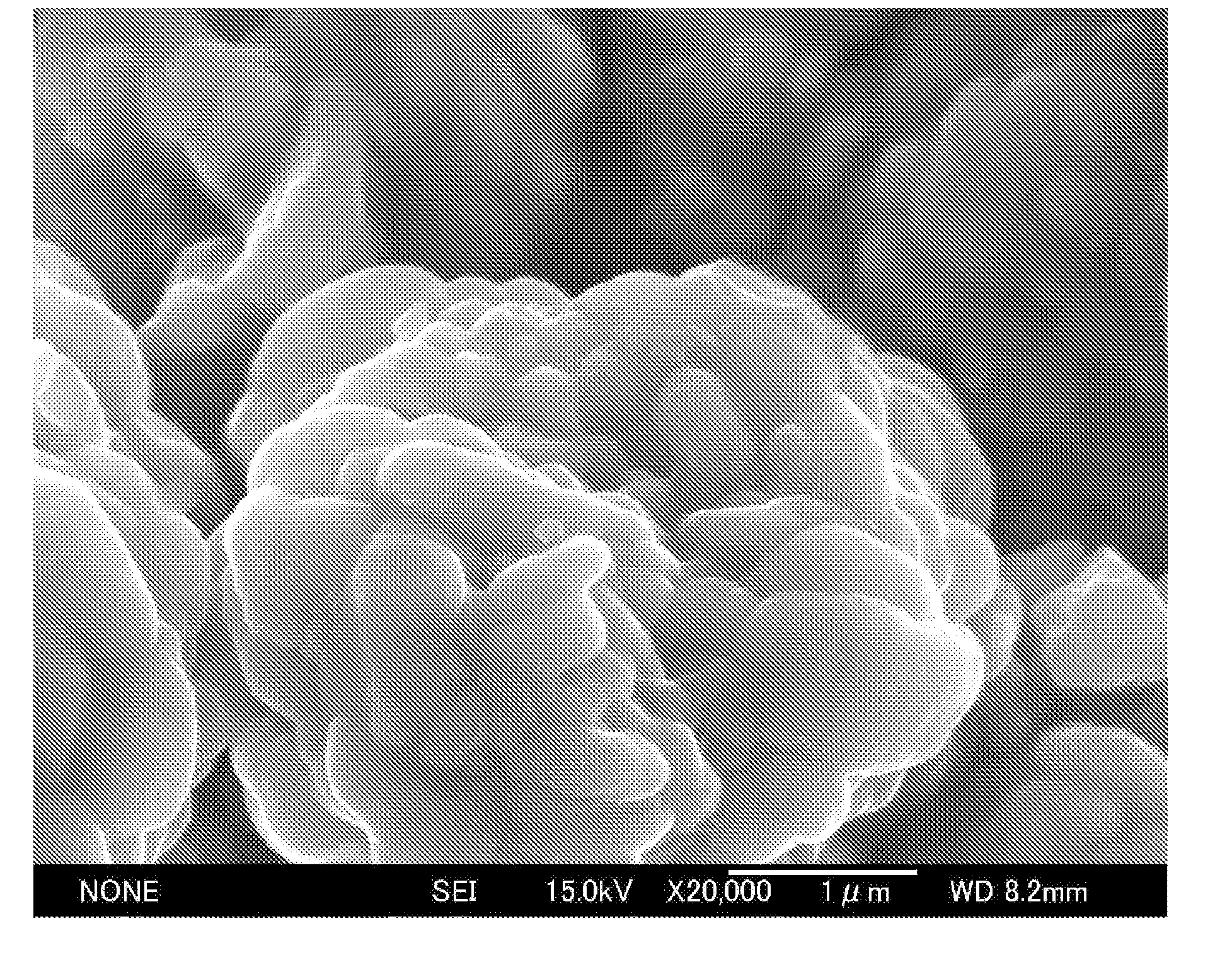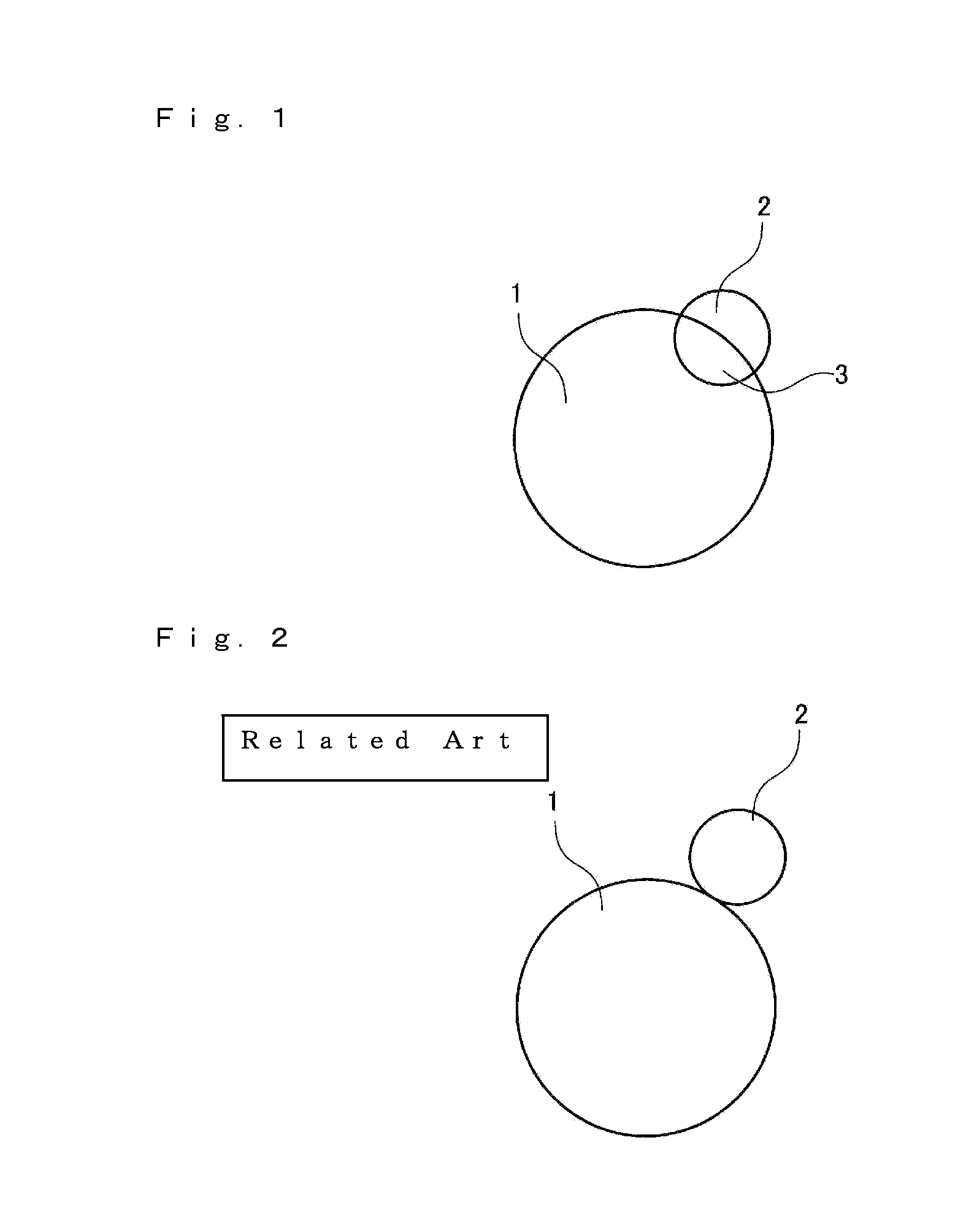Nonaqueous electrolyte secondary battery
a nonaqueous electrolyte and secondary battery technology, applied in the direction of cell components, electrochemical generators, transportation and packaging, etc., can solve the problems of increasing the energy consumption of these appliances, increasing the number of functions they perform, and scarce cobalt used in such positive electrode active materials, so as to enhance the high-rate charge/discharge characteristics and durability of the nonaqueous electrolyte secondary battery, and prevent short-circuit
- Summary
- Abstract
- Description
- Claims
- Application Information
AI Technical Summary
Benefits of technology
Problems solved by technology
Method used
Image
Examples
example 1
[0063]In making a positive electrode active material of Example 1, positive electrode active material particles composed of lithium transition metal complex oxide having a layered structure containing nickel and manganese as main components were prepared by mixing LiOH and Ni0.60Mn0.40(OH)2 obtained by a coprecipitation method in a particular ratio and then subjecting the mixture to primary baking at 1000° C. in air, thereby giving positive electrode active material particles composed of Li1.06Ni0.56Mn0.38O2 having a layered structure. The volume-average particle size of the primary particles of the obtained positive electrode active material particles composed of Li1.06Ni0.56Mn0.38O2 was about 1 μm and the volume-average particle size of the secondary particles was about 7 μm.
[0064]After mixing the positive electrode active material particles composed of Li1.06Ni0.56Mn0.38O2 with Nb2O5 having an average particle size of 150 nm in a particular ratio, the mixture was subjected to sec...
example 2
[0070]In Example 2, a positive electrode active material was fabricated as in Example 1 except that the secondary baking temperature at which a mixture of the positive electrode active material particles composed of Li1.06Ni0.56Mn0.38O2 and Nb2O5 having an average particle size of 150 nm was baked in air was set to 850° C. A three-electrode test cell of Example 2 was prepared as in Example 1 by using the positive electrode active material thus prepared.
[0071]The positive electrode active material prepared as above was also observed with a scanning electron microscope (SEM). The result is shown in FIG. 5.
[0072]The positive electrode active material was also investigated using an energy dispersive X-ray fluorescence spectrometer (EDX). It was found that fine particles composed of a niobium-containing oxide having an average size of about 150 nm were sintered and adhered onto the surfaces of the positive electrode active material particles composed of Li1.06Ni0.56Mn0.38O2.
[0073]The pos...
example 3
[0096]In Example 3, positive electrode active material particles were prepared by mixing Li2CO3 and a co-precipitated hydroxide represented by Ni0.5CO0.2Mn0.3(OH)2 in a particular ratio and baking the resulting mixture in air at 900° C. for 10 hours to obtain positive electrode active material particles composed of Li1.07Ni0.46CO0.19Mn0.28O2 having a layered structure. The positive electrode active material particles were mixed with Nb2O5 having an average particle size of 150 nm, and the resulting mixture was subjected to secondary baking in air at 700° C. for 1 hour as in Example 1 to prepare a positive electrode active material. The volume-average particle size of the primary particles of the obtained positive electrode active material particles was about 1 μm and the volume-average particle size of the secondary particles was about 6 μm.
[0097]The positive electrode active material was investigated using a scanning electron microscope (SEM) and an energy dispersive X-ray fluoresc...
PUM
| Property | Measurement | Unit |
|---|---|---|
| volume-average size | aaaaa | aaaaa |
| volume-average size | aaaaa | aaaaa |
| volume-average size | aaaaa | aaaaa |
Abstract
Description
Claims
Application Information
 Login to View More
Login to View More - R&D
- Intellectual Property
- Life Sciences
- Materials
- Tech Scout
- Unparalleled Data Quality
- Higher Quality Content
- 60% Fewer Hallucinations
Browse by: Latest US Patents, China's latest patents, Technical Efficacy Thesaurus, Application Domain, Technology Topic, Popular Technical Reports.
© 2025 PatSnap. All rights reserved.Legal|Privacy policy|Modern Slavery Act Transparency Statement|Sitemap|About US| Contact US: help@patsnap.com



